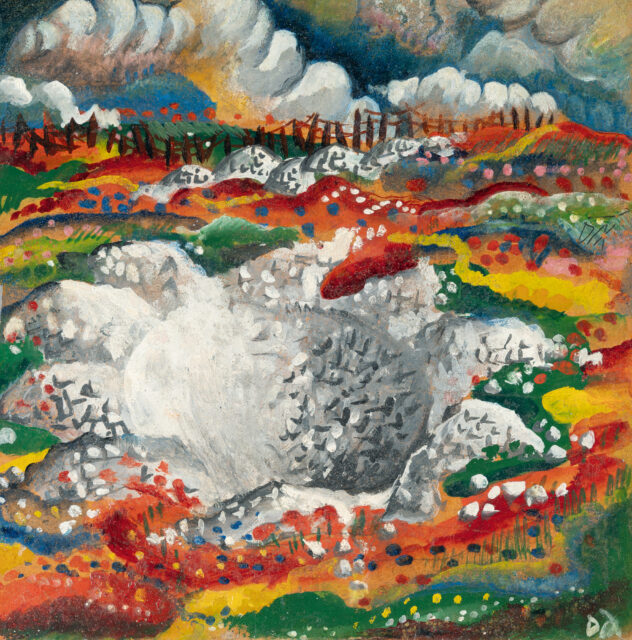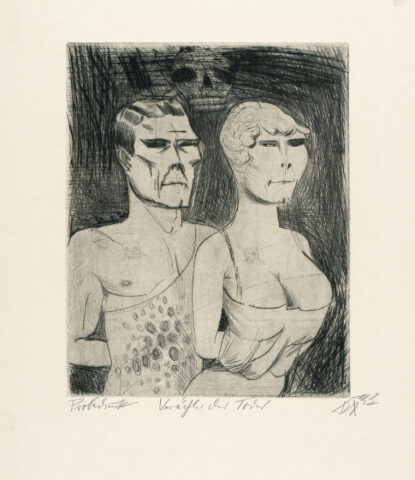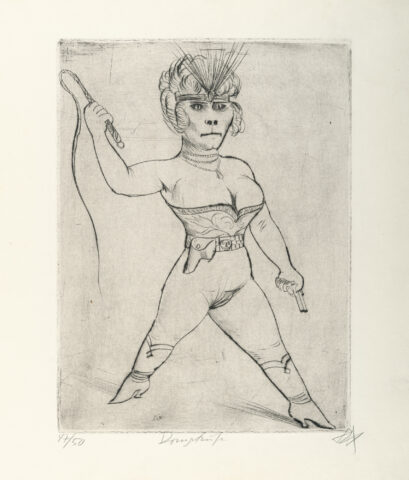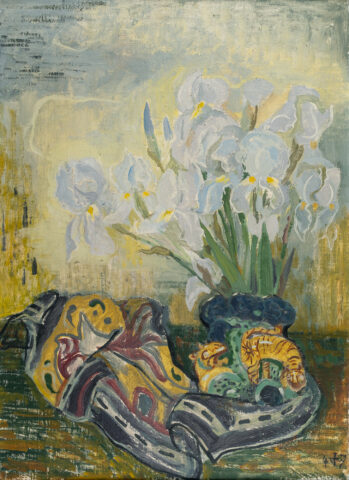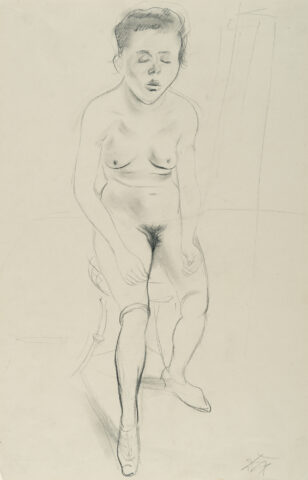
Shell crater
Details
Pfäffle G 1916/22. Literature: Lorenz, Ulrike, Otto Dix. Welt und Sinnlichkeit, in: Exhib. cat. Otto Dix. Welt und Sinnlichkeit, Kunstforum Ostdeutsche Galerie, Regensburg et. al. 2005/06, p. 39, with col. illus.; Peters, Olaf (ed.), exhib. cat. Otto Dix, Neue Galerie, New York/Montreal Museum of Fine Arts, Montreal 2010/11, p. 16, with col. illus. no. 6.Exhibitions: Otto Dix. Zum 100. Geburtstag 1891-1991, Galerie der Stadt Stuttgart/Nationalgalerie, Staatliche Museen Preußischer Kulturbesitz, Berlin 1991/92, p. 63, with col. illus.; Neue Sachlichkeit. Bilder auf der Suche nach der Wirklichkeit – Figurative Malerei der zwanziger Jahre, Städtische Kunsthalle, Mannheim 1994/95, p. 233, with col. illus. p. 49; Otto Dix 1891-1969, Kunsthandel Jörg Maaß, Berlin 2012, cat. no.29, with col. illus.; 1914 und die Folgen, Galerie Remmert und Barth, Düsseldorf 2014, with col. illus.Provenance: Former private ownership, Bad Nenndorf/Lower Saxony.
Description
• One of just five paintings of this motif
• Works from the war years rarely appear at auction
• The bizarre aesthetic of earth, torn and ravaged by man and material, fascinated the artist
Dix volunteered for military service at the beginning of the First World War in 1914. He fought on the front line for more than three years and was honoured several times for his bravery. His experiences in the trenches had a decisive influence on his life and work. In 1915/16, Dix produced over 50 drawings and 86 gouaches of deserted ruins and trench landscapes on square formats the size of a knapsack. The artist was fascinated by the bizarre aesthetics of war, how the earth’s surface scarred, torn up and broken out of control by man and material. In 1916, he wrote two field postcards to his friend Helene Jakob: “Shell craters within villages are full of elemental force. Everything in the neighbourhood seems to be subject to the dynamics of these enormous symmetrical funnels. They are eye sockets of the earth (…). They are no longer houses (…). They are living beings of a special kind with their own laws and living conditions. (…) It is a strange and rare beauty that speaks here” (see Lorenz WK 1.0.21 and 1.0.22). In the present painting, Dix documents how nature is reclaiming the landscape that has been maltreated by men and machines. Colourful flowers bloom again around the deep, grey scar of the torn surface of the earth. This work is one of only five oil paintings that show a view of the landscape furrowed by the war with rubble, craters and trenches.
* All results incl. buyer’s premium (27%) without VAT. No guarantee, subject to error.
** All post-auction prices excl. buyer's premium and VAT. No guarantee, subject to error.
*** Conditional Sale: The bid was accepted below the limit. Acquisition of the work may still be possible in our post-auction sale.
R = regular taxation
N = differential taxation on works of art which originate from a country outside of the EU
The private or commercial use of images shown on this Website, in particular through duplication or dissemination, is not permitted. All rights reserved.


